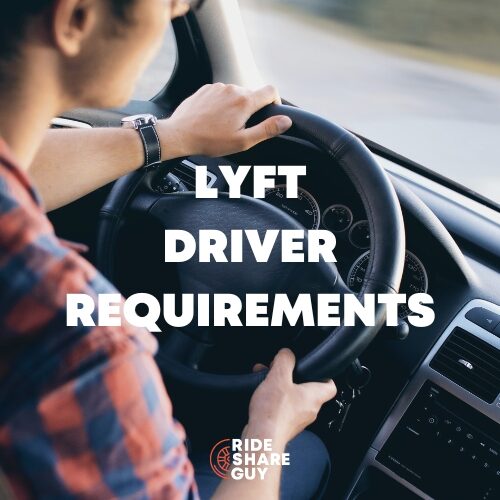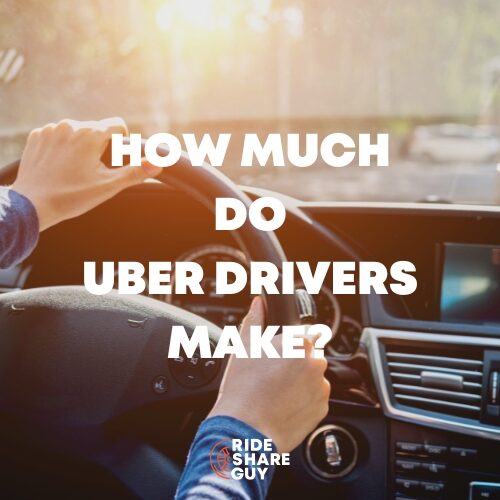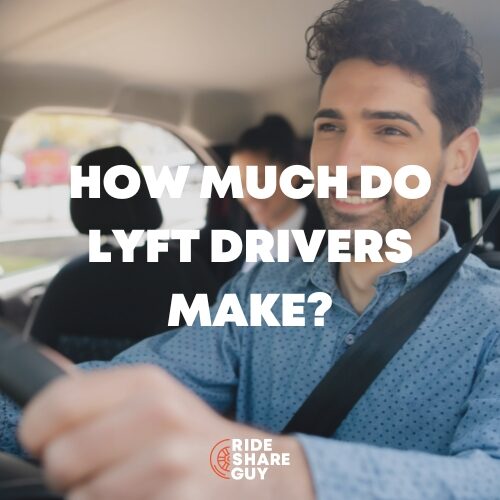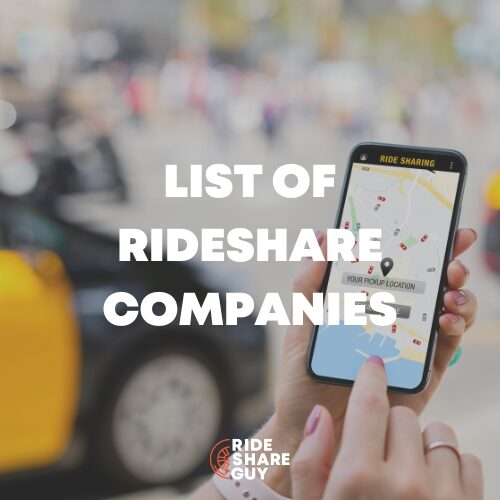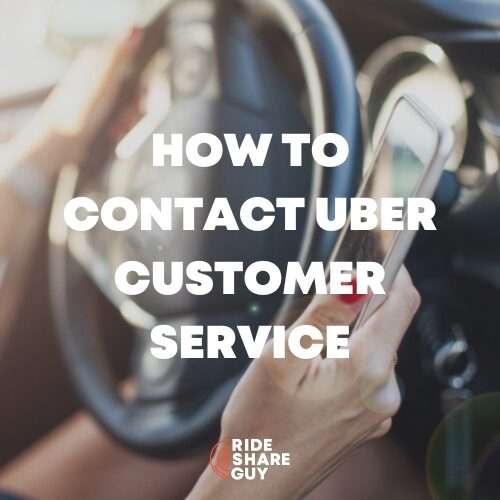Lyft has done a pretty good job communicating how their guarantees work and this week they even provided a detailed breakdown on the weekly statement. Uber on the other hand, not so much. Today, RSG contributor, Scott Van Maldegian takes a look at how Uber’s guarantees really work and shares a few tips and strategies on how you can really leverage them in your favor!
After my article on Lyft guarantees, Harry and I discussed a possible sequel for Uber guarantees. Then, last week, I received an email from someone who couldn’t figure out their Uber guarantee payments and asked me to take a look.
In short, Uber made a mistake for many people. Uber did fix the mistake for some and the additional amounts should show up in this weeks pay. With all of this confusion though, I wanted to clarify exactly how the Uber guarantees work and provide strategies to help you maximize your earnings with these guarantees. This article has a slightly different focus than Harry’s original article which focused on guarantees that applied to more hours and equally to all drivers in a market. This article is focused on one-time guarantees and guarantees that are only offered to some drivers.
Qualification
As with all guarantees, there are certain goals you must meet before qualifying for a guarantee bonus.
- Opt In (Received Guarantee Offers Only) – In case you didn’t know this, different guarantee offers are sent to different drivers. Is this fair? I’ll let you decide, but you need to know that you can only opt in to guarantee offers that have been emailed or texted to you. If you opt in to a guarantee offer that was forwarded to you from another driver, you will not receive the guarantee.
- Acceptance Rate – Uber requires drivers to accept a certain percentage of requests in order to qualify for the guarantee. The most common (and maybe the only ) percentage I have seen is 80 percent.
- Number of Rides Per Hour – Uber requires an average number of rides per hour over all the hours you drive for the guarantee. I have seen this number at one rider per hour to 1.5 rides per hour. This is different than Lyft in that it is an average calculation. If you complete 5 rides in 2 hours and none in the following 3 hours, and the guarantee requirement is for 1 ride per hour, you have still met the requirement. Also, this requirement is an all-or-nothing requirement. If your average over all the guarantee time you drove is below the requirement, you get nothing.
- Average Rating – Uber requires drivers to obtain at least a certain rating during the guarantee hours. The rating goal I have seen is 4.75.
- Minimum Time Online – Some guarantees come with a minimum time requirement in order to qualify for a guarantee. Not all guarantee offers come with this requirement and those that do vary quite a bit. Note that online time is actual online time. You can drive 20 minutes in each of 3 hours and qualify for 1 hour of online time toward the guarantee.
- Hot Zone Area – Uber used to require drivers to drive in certain zones in order to qualify for the guarantee. I have not seen this requirement in Chicago for a while, but I suspect that this requirement still exists in some markets.
Calculation
Here is a direct excerpt from one of Uber’s guarantees with their explanation of the guarantee calculation:
Guarantees are based on total fares, which is the price the rider pays for a trip, including the Safe Rider Fee
Example: Drive 1 hour and total $20 in fares when $30/hr is guaranteed, and we’ll pay you the additional $10
One question that came up during this evaluation is: What is included when Uber says “fares”? Here is what is included in the fare:
- Actual fare
- Surge (if applicable)
- Rider Safety Fee, as stated above
- Split Payment Fee, included as part of the Rider Safety Fee
The numbers I am using for this example were from an actual pay statement along with a correction from Uber.
- Guarantee: $50/hr
- Total Online Time: 5.0334 hours
- Total Guarantee: $251.67
- Total Fares: $144.75
- Total Guarantee Payment: $106.92
- Actual Income: $205.28
Are you with me so far? Let’s look at an alternate example where I have made up some numbers that I feel are reasonable. This example is based on two $10 rides per hour over 5 hours.
- Guarantee: $50/hr
- Total Online Time: 5.0 hours
- Total Guarantee: $250
- Total Fares: $100
- Total Guarantee Payment: $150
- Actual Income: $219.60
For more detail on the calculations, take a look at the supporting spreadsheet: Uber Guarantee Calculations
Did you notice that the driver that had lower fares made more money from the guarantee? The driver in the second example drove fewer miles, fewer rides and made more money. And this leads to the next logical piece…
Strategy
Harry covered some of these strategies in his article:
Earn More By Working Less: Uber’s Fare Guarantees Hacked
But there are two things that have changed/clarified since.
- Uber counts partial hours, so if you get 1 ride in 30 minutes, that only counts as a half hour, and it still counts toward your guarantee even though it is just half an hour. So this means that turning off the Uber app does not help and leveraging both apps also does not help with regards to the guarantee.
- The more you can minimize your fares while still meeting the guarantee requirements will maximize your income. This is shown in comparing the two examples.
How to work these guarantees to your maximum benefit will partially depend on your market and luck. We all know our next ride could be a 5 minute, 1 mile ride or it could be a 90 minute, 75 mile ride. You just never know, but we do know what type of ride requests we normally get in different areas, if any ride requests at all.
This strategy is based on probabilities and meeting the minimum requirements in order to maximize your profit. If you can drive fewer miles and make more money, that is the best outcome. The goal with these ideas is to make your pay statement look more like the second example than the first example.
Here are the ways to implement a strategy of minimizing the number of rides and the number of miles while still meeting the guarantee requirements. This is a review of what Harry wrote in his article.
- Drive in areas that have lower demand – This can be done in 2 ways. Find an area where a lot of drivers hang out in an area of moderate demand or find an area that has low demand. In Chicago, most suburbs still have a low amount of demand. I can expect about one ride per hour in the suburbs, but there is a risk of a long ride. In Chicago, there are also areas where the number of drivers exceeds the demand. Find those areas in your market.
- Drive in areas of high demand and then move to an area of little to no demand – While driving in Chicago, the rides are short. Drivers can normally achieve 3 to 4 rides per hour during the busy hours on a Saturday night. Drive during that time and then find an area that has little to no demand in a remote area somewhere. In the Chicago area, I am not sure those areas still exist anymore, but in other, less mature markets, they might.
One other stategy that I hesitate to even mention is regarding the $50 per hour guarantees that some drivers have been seeing. These guarantees are being offered to some drivers in an effort to bring them back to driving for Uber. So, the strategy here is to stop driving for Uber and only drive for Lyft and/or Sidecar until being offered this awesome guarantee. I am currently implementing this strategy with my last ride for Uber being March 5. I will let you know if this strategy works for me, but I suspect that if someone from Uber reads this article, they will make sure I don’t get offered this guarantee. I am sure they don’t want a lot of drivers trying out this strategy.
Experience Using Strategies
This past weekend, I implemented these basic strategies using Lyft’s $40 and $25 per hour guarantees. I was pretty successful using the strategies even though most of the ride requests I received were pretty long. I started everyday at home in the far west suburbs of Chicago.
On Friday evening with the $25 guarantee, I only received one request and it was a short ride. It was about $5. Perfect for qualifying for 1 hour worth of the guarantee. I was only able to be online for 2 hours of the guarantee since I was doing a lot of mentor rides that day, so not too bad. That was a win in my book.
On Saturday, there was a $40 guarantee. I went online at 3pm and got a ride request at 4:30pm near my house. That ride was a long ride. The ride was about 50 minutes and about 35 miles for a total fare of over $48. Right after that, I got a ride request and that ride was also a long ride with a fare of $22. This took me past 6, so I went offline and drove home. I qualified for 2 hours of the guarantee with total fares of about $70. Didn’t earn much from the guarantee, but still not bad.
On Sunday with a $40 guarantee, I earned one hour of guarantee with a $22 ride.
Overall, I didn’t drive much and earned over $32 extra on less than $100 in fares. If we apply this to the Uber guarantee, I would have stayed online in the areas where it wasn’t busy and then driven to the busy areas to make up the difference. With Lyft you can’t do that, but with Uber you can. I would have earned more fares with Uber, but I would have qualified for four more hours of the guarantee. So I predict I would have done better with the Uber guarantee given the same $40 and $25 Lyft guarantees.
There are a lot of smart and creative readers of The Rideshare Guy. Do the examples above give you any ideas on how to maximize the Uber guarantees? I look forward to reading your comments with your additional ideas.
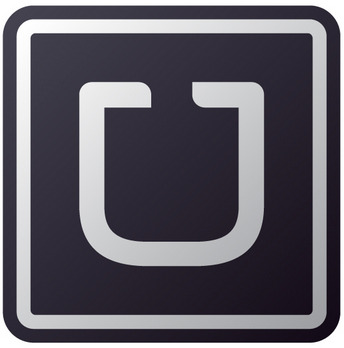 Interested in becoming an Uber driver? Uber is giving bonuses of up to $250 (depending on your city) after you sign up to drive with Uber and complete a certain number of trips. If you are already a driver on Sidecar or Lyft and were active prior to 1/8/2015, use this link to apply to qualify for up to a $500 bonus.
Interested in becoming an Uber driver? Uber is giving bonuses of up to $250 (depending on your city) after you sign up to drive with Uber and complete a certain number of trips. If you are already a driver on Sidecar or Lyft and were active prior to 1/8/2015, use this link to apply to qualify for up to a $500 bonus.
-Scott @ RSG
